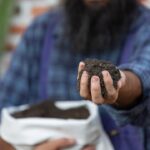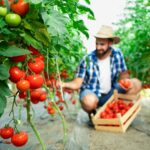Livestock farming is a vital sector in South Africa, providing food, employment, and economic growth. To build a profitable operation, farmers must focus on efficient management, animal welfare, and sustainability. One of the most critical factors in achieving these goals is investing in the right equipment. Proper equipment not only enhances productivity but also reduces costs and ensures the health and safety of animals.
Here is a guide to building a profitable livestock farming operation by utilizing proper equipment effectively.
Start with a Well-Planned Farm Layout
A well-organized farm layout improves efficiency and minimizes stress on animals and workers.
Key Equipment for Farm Layout:
- Fencing: Use durable and secure fencing materials like electric, barbed, or mesh fences to contain animals safely.
- Gates and Corrals: Install gates and holding pens for easy movement and handling of livestock.
- Shelters: Provide well-ventilated, weatherproof shelters that protect animals from extreme weather conditions.
Invest in Feeding and Watering Systems
Proper nutrition and hydration are fundamental to livestock health and productivity.
Key Feeding and Watering Equipment:
- Automatic Feeders: Reduce labor and ensure consistent feed delivery.
- Troughs and Hay Racks: Use durable feeding stations to minimize waste and contamination.
- Watering Systems: Install automatic waterers or water tanks with filtration systems to provide clean and continuous water supply.
Prioritize Breeding and Health Management Tools
Effective breeding and health management are critical for herd growth and profitability.
Key Equipment for Breeding and Health:
- Artificial Insemination (AI) Kits: Improve genetic quality and increase breeding efficiency.
- Ultrasound Scanners: Monitor pregnancies and detect health issues early.
- Vaccination and Dosing Equipment: Use syringes, drench guns, and vaccination crates to administer medicines accurately.
Optimize Waste Management
Proper waste management promotes hygiene and reduces environmental impact.
Key Equipment for Waste Management:
- Manure Spreaders: Recycle animal waste as organic fertilizer for crops.
- Composting Equipment: Convert waste into nutrient-rich compost efficiently.
- Drainage Systems: Prevent waterlogging and ensure clean surroundings for livestock.
Use Modern Handling and Transport Systems
Handling and transport equipment minimize stress and injuries during routine tasks.
Key Handling and Transport Equipment:
- Cattle Crushes and Headgates: Facilitate safe handling for vaccinations, tagging, or inspections.
- Loading Ramps and Trailers: Ensure easy and safe transportation of animals.
- Weighing Scales: Monitor livestock weight to track growth and market readiness.
Leverage Advanced Monitoring and Tracking Tools
Technology can help farmers make informed decisions and improve operational efficiency.
Key Monitoring Tools:
- Smart Collars or Tags: Track animal movement, health, and location.
- CCTV Cameras: Monitor livestock remotely to identify problems early.
- Farm Management Software: Keep records of feeding schedules, health checks, and production data.
Energy-Efficient Solutions
Energy-efficient equipment reduces operational costs and environmental impact.
Key Energy Solutions:
- Solar-Powered Water Pumps: Provide sustainable water supply.
- Energy-Efficient Lighting: Use LED lights in barns and shelters to save energy.
- Biogas Systems: Convert animal waste into renewable energy for heating or electricity.
Develop a Maintenance and Training Program
Investing in proper equipment is only half the battle; maintaining it ensures longevity and efficiency.
Maintenance Tips:
- Regularly inspect and repair equipment to avoid costly breakdowns.
- Train farmworkers to operate equipment safely and efficiently.
- Keep a stock of essential spare parts for quick replacements.
Scale Operations Gradually
Scaling up a livestock farming operation requires careful planning and investment in additional equipment. Avoid overextending resources by expanding step by step.
Steps to Scale Efficiently:
- Start with essential equipment and add more as your herd grows.
- Monitor performance metrics like productivity, feed efficiency, and profit margins.
- Seek financing options or grants for equipment upgrades.
Building a profitable livestock farming operation in South Africa requires strategic investment in proper equipment. From feeding systems and breeding tools to waste management and energy-efficient solutions, the right equipment enhances productivity, reduces costs, and ensures animal welfare. By combining modern technology with best farming practices, farmers can create sustainable and profitable operations that contribute to the agricultural sector’s growth.
Join 'Farmers Mag' WhatsApp Channel
Get the latest Farming news and tips delivered straight to your WhatsApp
CLICK HERE TO JOIN






